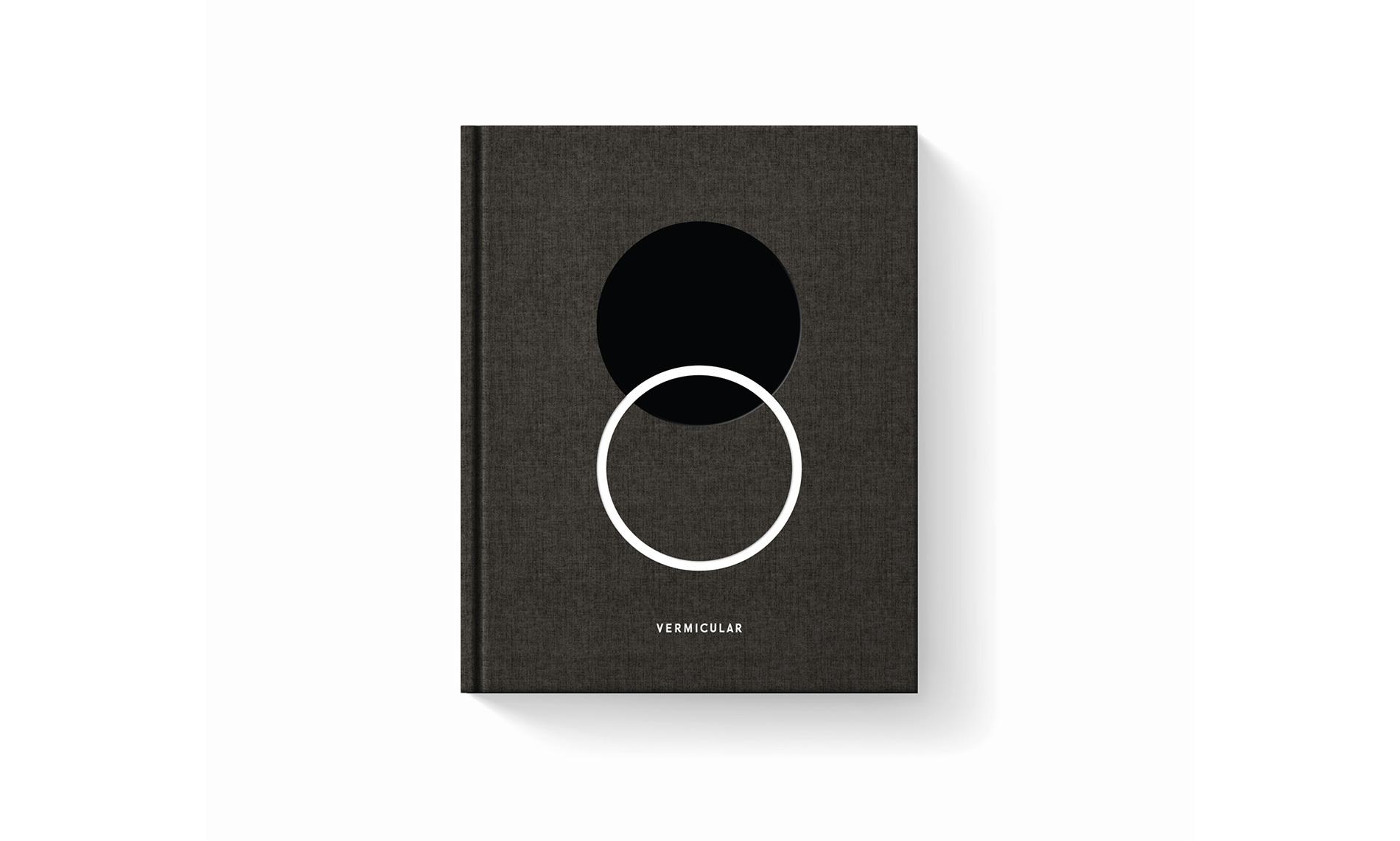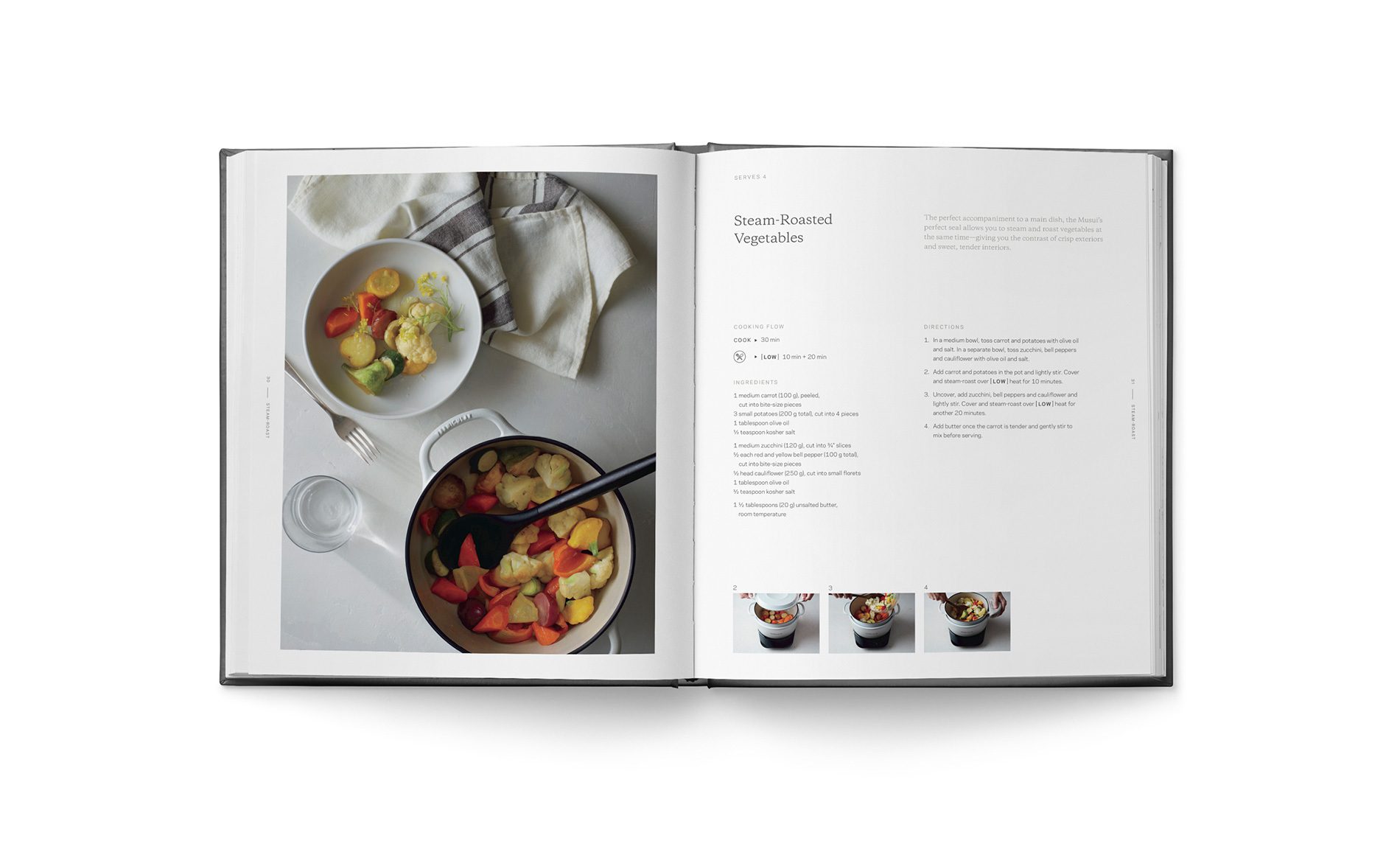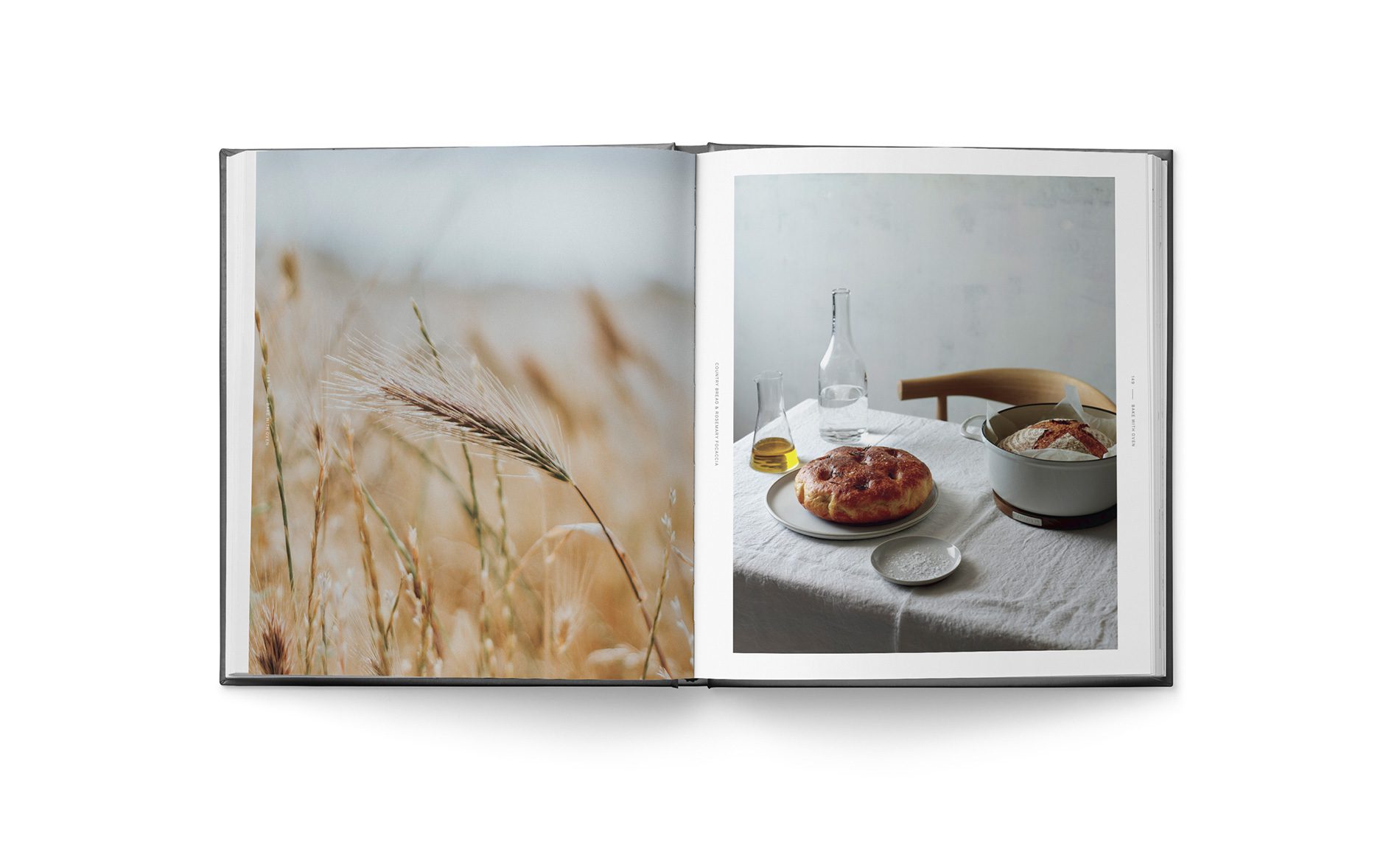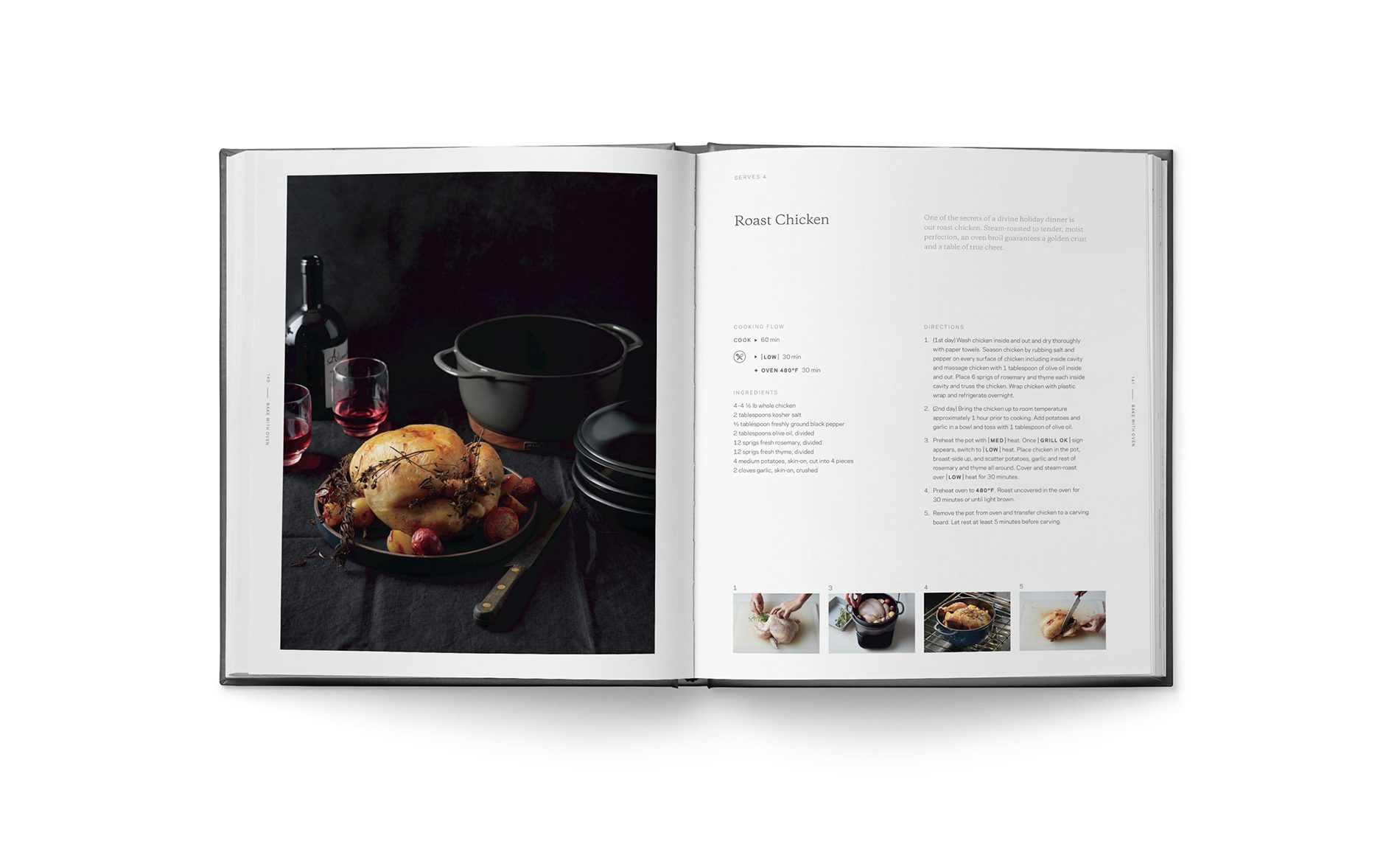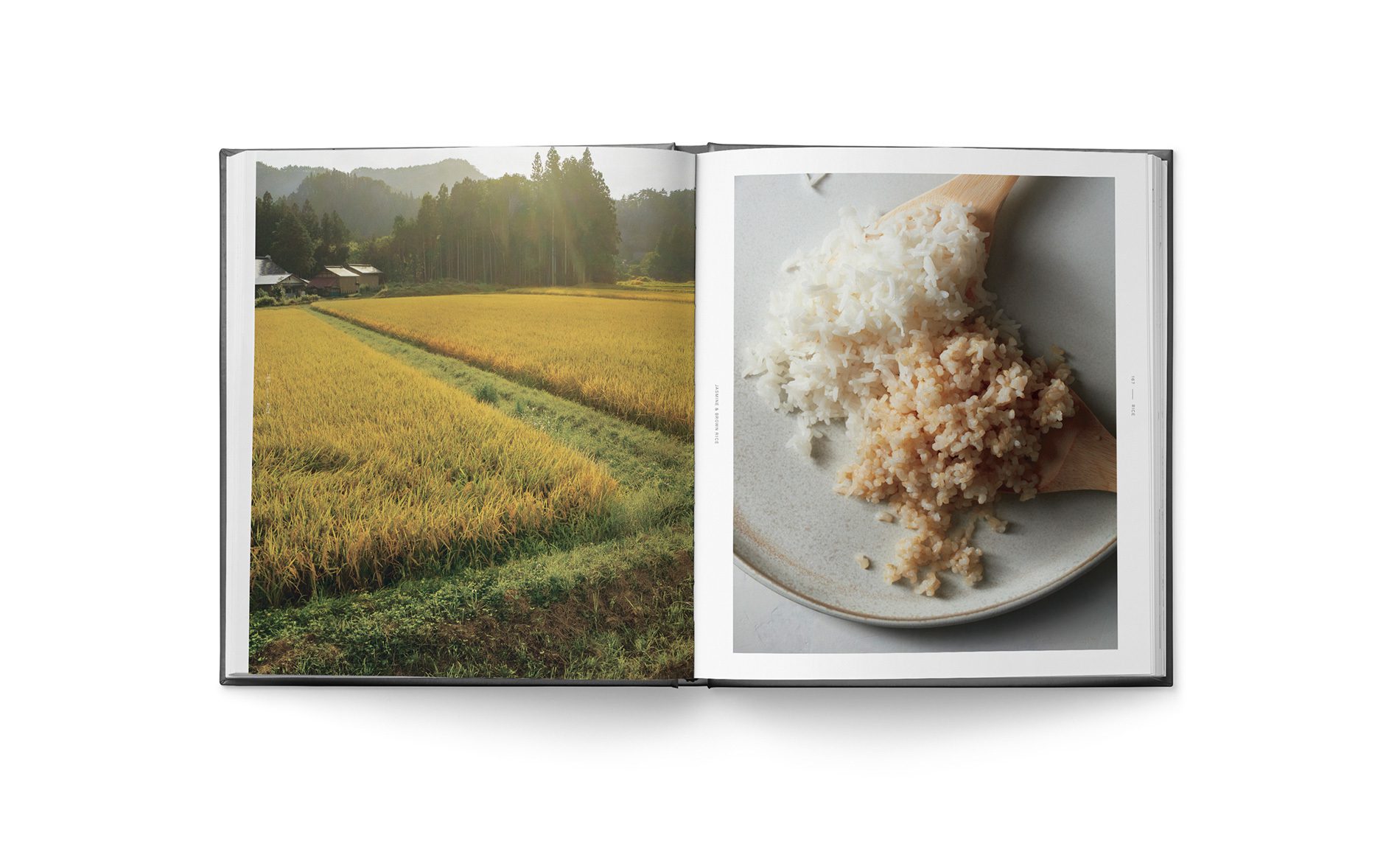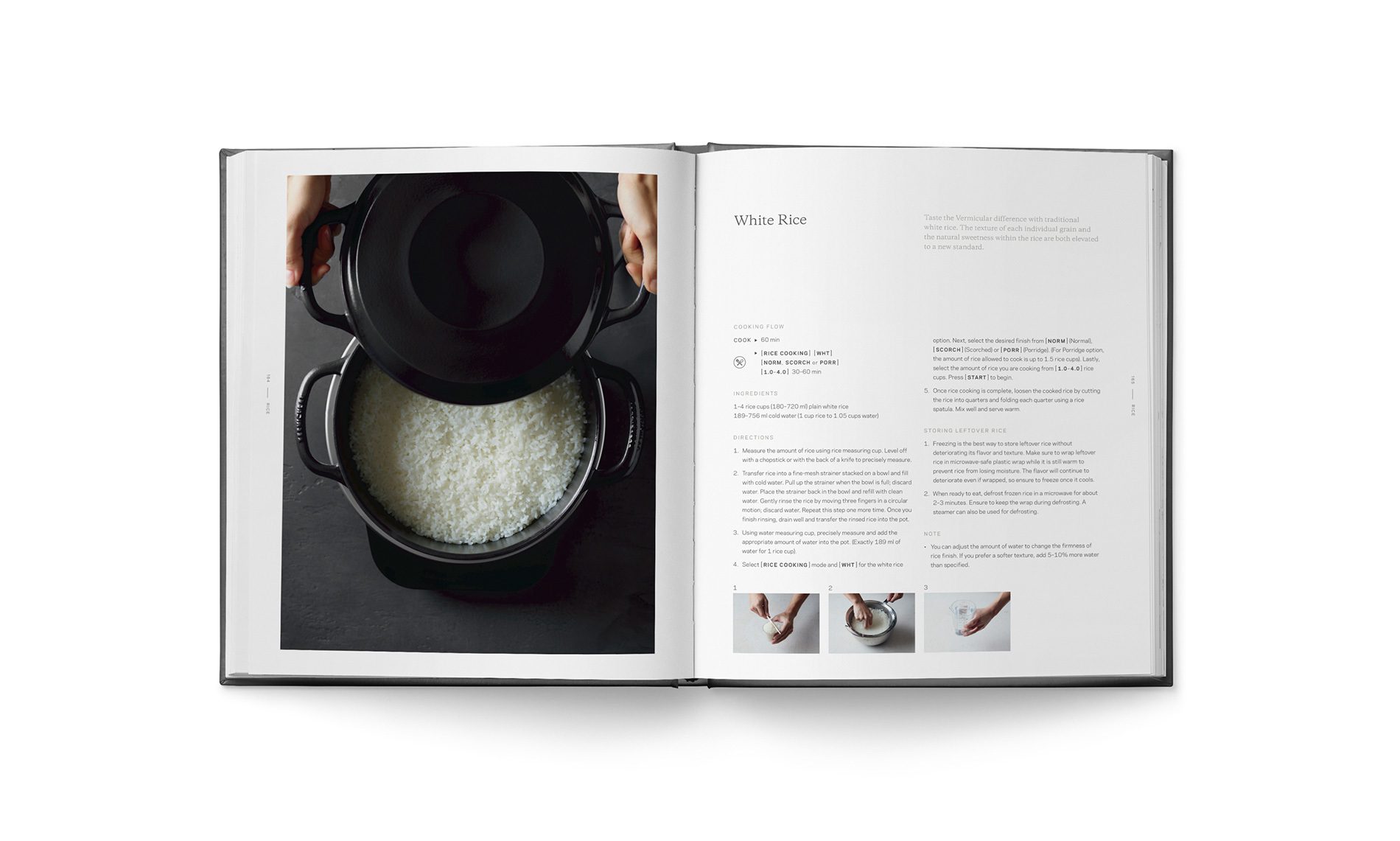Crafted by trusted chefs, our recipes are designed to bring warmth, happiness, and connection to your occasions, both big and small.
Musui "Waterless" Cooking is Vermicular’s fundamental cooking technique. Instead of using excess water, seasoning or sauces, let ingredients do the work. The Musui condenses and intensifies their inherent deliciousness to create exquisite flavors, naturally.
-
Choose [LOW] heat for Musui Cooking
Musui cooking uses the natural juices present in ingredients by steaming over [LOW] heat. Gradually heating ingredients is the key to drawing out umami.
-
Adjust cooking time for smaller portions
Consider cooking complete approximately 10 minutes after steam comes out from under the lid.
Musui Cooking
Musui "Waterless" Cooking is Vermicular’s fundamental cooking technique. Instead of using excess water, seasoning or sauces, let ingredients do the work. The Musui condenses and intensifies their inherent deliciousness to create exquisite flavors, naturally.
-
Choose [LOW] heat for Musui Cooking
Musui cooking uses the natural juices present in ingredients by steaming over [LOW] heat. Gradually heating ingredients is the key to drawing out umami.
-
Adjust cooking time for smaller portions
Consider cooking complete approximately 10 minutes after steam comes out from under the lid.
The Musui’s exceptional seal and trifecta of heating methods give you the best of both worlds—transforming roasted vegetables and protein staples into surprisingly textured, multi-dimensional meals.
-
Cook with the lid on when steam-roasting
Always cover the Musui while cooking so that steam is retained and circulates inside the pot.
-
For vegetables, once rinsed, transfer to the pot without draining water
Keeping vegetables moist will prevent scorching and boost natural flavors.
-
Add 1 or 2 tablespoons of water for ingredients with less water content
Burning is unavoidable when cooking some vegetables, such as carrots or sweet potatoes. In such cases, try adding 1 or 2 tablespoons to help generate steam when cooking.
Steam-Roast
The Musui’s exceptional seal and trifecta of heating methods give you the best of both worlds—transforming roasted vegetables and protein staples into surprisingly textured, multi-dimensional meals.
-
Cook with the lid on when steam-roasting
Always cover the Musui while cooking so that steam is retained and circulates inside the pot.
-
For vegetables, once rinsed, transfer to the pot without draining water
Keeping vegetables moist will prevent scorching and boost natural flavors.
-
Add 1 or 2 tablespoons of water for ingredients with less water content
Burning is unavoidable when cooking some vegetables, such as carrots or sweet potatoes. In such cases, try adding 1 or 2 tablespoons to help generate steam when cooking.
Perfect for a dinner party or personal meal prep, the Kamado makes precision cooking simple. Cook your proteins and eggs to perfection with exact temperatures ranging from 90 to 200°F, without having to undertake the hassle of vacuum-sealing. Proteins can be browned first and cooked slowly with precision heat control to build flavor and achieve incomparable juiciness and texture.
-
Choose [WARM] heat for precision cooking
[WARM] mode allows you to set and maintain exact temperature for cooking large cuts of meat such as roast beef or temperature-sensitive recipes, such as chicken and turkey breast, poached eggs, and egg custards.
-
Set the accurate temperature and cooking time for each recipe
The default temperature for [WARM] mode is set at 175°F. Temperatures can be adjusted by increments of 1°F between 90–200°F and held exactly at that temperature during cooking. The cooking temperatures for each heat setting are also precisely controlled: [MED] at 445ºF, [LOW] at 300ºF and [EXT LOW] heat at 230ºF.
Precision Cooking
Perfect for a dinner party or personal meal prep, the Kamado makes precision cooking simple. Cook your proteins and eggs to perfection with exact temperatures ranging from 90 to 200°F, without having to undertake the hassle of vacuum-sealing. Proteins can be browned first and cooked slowly with precision heat control to build flavor and achieve incomparable juiciness and texture.
-
Choose [WARM] heat for precision cooking
[WARM] mode allows you to set and maintain exact temperature for cooking large cuts of meat such as roast beef or temperature-sensitive recipes, such as chicken and turkey breast, poached eggs, and egg custards.
-
Set the accurate temperature and cooking time for each recipe
The default temperature for [WARM] mode is set at 175°F. Temperatures can be adjusted by increments of 1°F between 90–200°F and held exactly at that temperature during cooking. The cooking temperatures for each heat setting are also precisely controlled: [MED] at 445ºF, [LOW] at 300ºF and [EXT LOW] heat at 230ºF.
The formidable cast iron of the Musui provides exceptional heat distribution and retention for an impeccable sear and sauté. Achieve a beautifully caramelized, deep-brown sear or a pleasing tender-crisp bite, preserving the integrity of flavor and nutrients with a quick sauté.
-
Start sautéing or searing once the [GRILL OK] sign is displayed on the Kamado
The [GRILL OK] sign confirms that the pot is thoroughly preheated. Next: evenly spread oil in the pot to prevent any sticking and to ensure a crisp, golden brown crust. Searing and sautéing using [MED] heat can be continued for 25 minutes.
-
Sear by pressing thick-cut meats down against the bottom of the pot
The key to searing evenly is pressing down until the sizzling sound stops. Once seared, the meat should easily come off the bottom of the pot.
-
For sautéing, try to cut ingredients in similar sizes so they cook evenly
Make sure all ingredients are chopped and ready to go before you start preheating.
Sear & Sauté
The formidable cast iron of the Musui provides exceptional heat distribution and retention for an impeccable sear and sauté. Achieve a beautifully caramelized, deep-brown sear or a pleasing tender-crisp bite, preserving the integrity of flavor and nutrients with a quick sauté.
-
Start sautéing or searing once the [GRILL OK] sign is displayed on the Kamado
The [GRILL OK] sign confirms that the pot is thoroughly preheated. Next: evenly spread oil in the pot to prevent any sticking and to ensure a crisp, golden brown crust. Searing and sautéing using [MED] heat can be continued for 25 minutes.
-
Sear by pressing thick-cut meats down against the bottom of the pot
The key to searing evenly is pressing down until the sizzling sound stops. Once seared, the meat should easily come off the bottom of the pot.
-
For sautéing, try to cut ingredients in similar sizes so they cook evenly
Make sure all ingredients are chopped and ready to go before you start preheating.
Because cast iron conducts and retains heat exceptionally well, the Musui is ideal for low and slow braises and stews. Ingredients can be seared or sautéed first and then simmered or braised, all within the same pot. The precision seal ensures ingredients develop into a delectable one-pot meal with deep, complex flavor profiles.
-
Sear and sauté first to build flavors
The ingredients can be first seared or sautéed and then simmered or braised, all within the same pot.
-
Heat low and slow for best results
Lower the heat accordingly, as cast iron is known to distribute and retain heat evenly throughout the pot.
-
Avoid adding too much liquid
Steam convection generated by the precision seal of the Musui complements braising and stewing for efficient and elevated cooking.
Braise & Stew
Because cast iron conducts and retains heat exceptionally well, the Musui is ideal for low and slow braises and stews. Ingredients can be seared or sautéed first and then simmered or braised, all within the same pot. The precision seal ensures ingredients develop into a delectable one-pot meal with deep, complex flavor profiles.
-
Sear and sauté first to build flavors
The ingredients can be first seared or sautéed and then simmered or braised, all within the same pot.
-
Heat low and slow for best results
Lower the heat accordingly, as cast iron is known to distribute and retain heat evenly throughout the pot.
-
Avoid adding too much liquid
Steam convection generated by the precision seal of the Musui complements braising and stewing for efficient and elevated cooking.
Velvety desserts and impressive entrées with golden crusts are now in your repertoire. The Musui delicately crafts smooth textures for such desserts like custard, while a quick collaboration with your oven gives main dishes an impeccable crust.
-
Steam convection used to perfection
For steam-baking, steam heat is used. It requires a very minimal amount of water and delicately creates smooth textures for desserts.
-
To make delicious bread, choose the [WARM] mode for proofing
The Musui–Kamado controls the temperature at extremely accuracy, giving yeast the ability to work, guaranteeing consistent proofing and absolving you from having to hover over the rising loaf.
-
Use your oven to complete a recipe
It’s the final step in crafting crumbly, texturized crusts for your sweet and savory dishes alike.
Bake with Oven
Velvety desserts and impressive entrées with golden crusts are now in your repertoire. The Musui delicately crafts smooth textures for such desserts like custard, while a quick collaboration with your oven gives main dishes an impeccable crust.
-
Steam convection used to perfection
For steam-baking, steam heat is used. It requires a very minimal amount of water and delicately creates smooth textures for desserts.
-
To make delicious bread, choose the [WARM] mode for proofing
The Musui–Kamado controls the temperature at extremely accuracy, giving yeast the ability to work, guaranteeing consistent proofing and absolving you from having to hover over the rising loaf.
-
Use your oven to complete a recipe
It’s the final step in crafting crumbly, texturized crusts for your sweet and savory dishes alike.
Inspired by the traditional Japanese kamado stove of the past, the Musui–Kamado couples the cherished art of rice cooking with a 21st century ease. At the touch of a button, achieve fluffy, delicious rice with no hovering or stoking of flames necessary.
-
Make divine rice in a few simple steps
Select the type of rice (white or brown), desired rice finish (normal, scorched or porridge) and amount of rice (up to 4 rice cups) you wish to cook. Then, set the completion time and press [START] to begin.*
Note: 1 rice cup equals 180ml and is different from 1 US cup (240ml).
-
Wrap and freeze leftover rice to best maintain flavor and texture
To ensure rice achieves its impeccable taste and texture, the Musui–Kamado does not have a 'keep warm' function. To maintain flavor and texture, you can wrap leftover rice in plastic wrap while the rice is still warm and freeze it. Use a microwave or steamer to reheat the leftovers.
-
Adjust the amount setting on the Kamado when adding ingredients for mixed rice
Increase 1 rice cup for every 330 g (11.6 oz) of additional ingredients when cooking mixed rice. Immediately start rice cooking once you add in seasoning.
-
The default cooking time for white rice is 60 minutes
30 minutes of soaking time and 30 minutes of actual cooking time for best results. You can either cut down or eliminate soaking time if you are in a rush.
* The detailed instructions on how to operate [RICE COOKING] mode is included in the cookbook and instruction manual.
Rice
Inspired by the traditional Japanese kamado stove of the past, the Musui–Kamado couples the cherished art of rice cooking with a 21st century ease. At the touch of a button, achieve fluffy, delicious rice with no hovering or stoking of flames necessary.
-
Make divine rice in a few simple steps
Select the type of rice (white or brown), desired rice finish (normal, scorched or porridge) and amount of rice (up to 4 rice cups) you wish to cook. Then, set the completion time and press [START] to begin.*
Note: 1 rice cup equals 180ml and is different from 1 US cup (240ml).
-
Wrap and freeze leftover rice to best maintain flavor and texture
To ensure rice achieves its impeccable taste and texture, the Musui–Kamado does not have a 'keep warm' function. To maintain flavor and texture, you can wrap leftover rice in plastic wrap while the rice is still warm and freeze it. Use a microwave or steamer to reheat the leftovers.
-
Adjust the amount setting on the Kamado when adding ingredients for mixed rice
Increase 1 rice cup for every 330 g (11.6 oz) of additional ingredients when cooking mixed rice. Immediately start rice cooking once you add in seasoning.
-
The default cooking time for white rice is 60 minutes
30 minutes of soaking time and 30 minutes of actual cooking time for best results. You can either cut down or eliminate soaking time if you are in a rush.
* The detailed instructions on how to operate [RICE COOKING] mode is included in the cookbook and instruction manual.
Master the art of your
Musui–Kamado with the Vermicular Cookbook.
A delightful, delicious guide, our cookbook empowers you to master every cooking technique with recipes that span cherished Japanese dishes to fresh, modern favorites.
